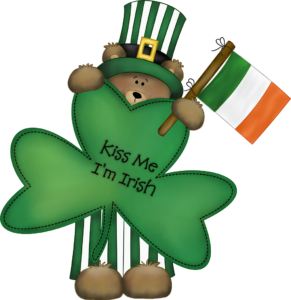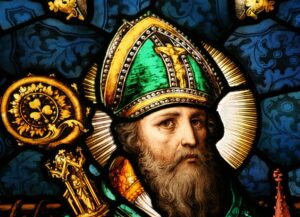Everybody's Irish On St. Paddy's Day!

Why Do We Celebrate St Patrick's Day?
Ah, the luck of the Irish. The enchanted land of Ireland conjures up thoughts of many things: potatoes, the color green, castles, the pot ‘o gold at the end of the rainbow, leprechauns, river dancing and jigs, Irish stew, whiskey, coffee, and pubs. But, most importantly, St. Patrick’s Day comes to mind. Legend has it that this day started as a religious celebration in the 17th century to commemorate the life of Saint Patrick and the arrival of Christianity in Ireland. This “Feast Day” always took place on the anniversary of Patrick’s death, which was believed to be March 17, 461 AD. And celebrate people do all around the world of all things IRISH with parades, special foods, music, dancing, drinking and a whole lot of green.
The St. Patrick’s Day celebrations we recognize today are actually a product of Irish immigrants in America. Parades sprung up in major U.S. cities in the 1700s, including Boston and New York City. As Irish populations grew in America, so did St. Patrick’s Day festivities. During the 1900s, Americans on March 17 were wearing green clothes, eating corned beef and cabbage (despite it not being a popular dish in Ireland!), and attending massive parades across the country.
WHY DO WE WEAR GREEN ON ST. PATRICK’S DAY?
Ireland wasn’t always associated with the color green. Even though its lush hills would suggest otherwise, the Emerald Isle was actually once aligned with the color blue instead. When Henry the VIII claimed himself to be king of Ireland in the 1500s, his flag was blue, meaning that Ireland was also associated with the color. However, green was later used as the color of the flag in the Great Irish Rebellion of 1641 when the Irish fought against the English. Over the years, green became a national symbol of pride for Ireland.
Wearing green clothes became common in the U.S. at St. Patrick’s Day parades and celebrations in the 1800s. It was a symbol that Irish-Americans used to honor their heritage and seems to have stuck all these years later.
So, What's The Scoop On St. Patrick?

Believe it or not, he wasn’t even Irish, but he found his faith while being held as prisoner by a group of Irish raiders. As the story goes, he was born in what is modern day England—not Ireland—to wealthy parents near the end of the fourth century. He is believed to have died on March 17, around 460 A.D.
His father was a deacon, but the future saint wasn’t a religious child. It wasn’t until he was kidnapped at age 16 and taken to Ireland (where he was forced to work as shepherd for Irish invaders) that he found his faith. Throughout his time in captivity he became a devout Christian, and was encouraged by a voice he believed to be God’s to escape from his captors.
After walking for hundreds of miles and returning to England, Patrick’s religious beliefs were still intact. So much so that he received another, otherworldly vision (this time from an angel) telling him to return to the country in which he’d been held captive and spread the word of the Bible. He underwent missionary training for the next 15 years and became an ordained priest. Then he set off on a return trip to Ireland. Even though he was not the first person to introduce Christianity to the Irish, he converted many Irish natives from paganism. He spread his religion throughout the country over the next 40 years, respecting the culture of the Irish along the way.
Familiar with the Irish language and culture, Patrick chose to incorporate traditional ritual into his lessons of Christianity instead of attempting to eradicate native Irish beliefs. For instance, he used bonfires to celebrate Easter since the Irish were used to honoring their gods with fire. He also superimposed a sun, a powerful Irish symbol, onto the Christian cross to create what is now called a Celtic cross, so that veneration of the symbol would seem more natural to the Irish. The Irish culture centered around a rich tradition of oral legend and myth. When this is considered, it is no surprise that the story of Patrick’s life became exaggerated over the centuries—spinning exciting tales to remember history has always been a part of the Irish way of life.
He may be known as the patron saint of Ireland, but Patrick was never actually canonized by the Catholic Church. This is simply due to the era he lived in. During the first millennium, there was no formal canonization process in the Catholic Church. After becoming a priest and helping to spread Christianity throughout Ireland, Patrick was likely proclaimed a saint by popular acclaim.

Thanks for your blog, nice to read. Do not stop.
Pretty nice post. I simply stumbled upon your weblog and wished to say that I’ve truly loved surfing around your blog posts. After all I will be subscribing for your rss feed and I hope you write again soon!